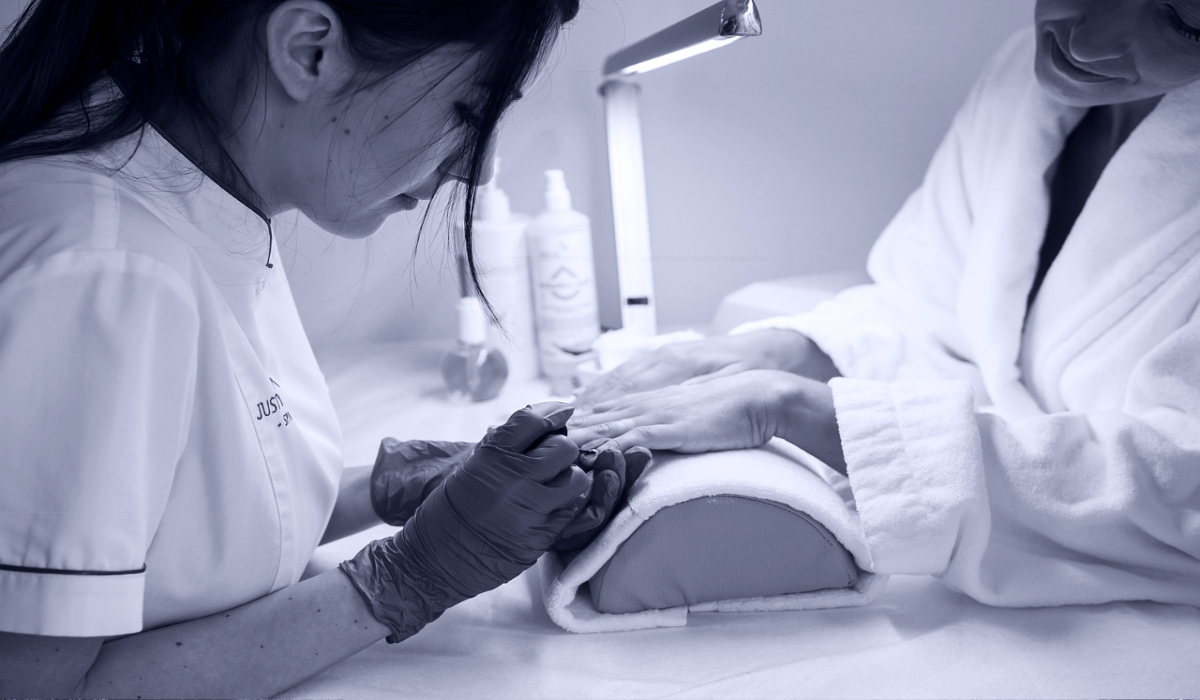One particularly relevant point concerns the inclusion of the photoinitiator trimethylbenzoyl diphenylphosphine oxide (TPO, CAS 75980-60-8), which is widely used in the nail industry: Due to its new classification as toxic to reproduction category 1B, TPO is listed in Annex II of the EU Cosmetics Regulation and may no longer be used in cosmetic products from 01.09.2025. For the industry, this means checking formulations, reformulating them if necessary, or withdrawing products from the market in good time.
In practice, however, nail salons and other professional users are faced with the question: What will apply from 01.09.2025, to the use of existing products that contain TPO?
The European Commission published non-binding, interpretatory FAQs on this topic on 07.08.2025. These state that professional users will no longer be allowed to use such products on customers from 01.09.2025:
“(…) a professional user e.g. nail technician, salon) cannot use such a product on clients from 1 September 2025 onwards, because this constitutes ‘making available on the market’ in the course of a commercial activity. This applies regardless of whether the product was purchased before the cut-off date.”, availble under: TPO in Nail Products – Questions & Answers – European Commission (last accessed on 27.08.2025)
We do not consider this interpretation to be valid. This is because nail salons do not place TPO-containing cosmetic products on the market or make them available on the market by applying them to their customers’ nails.
In detail:
According to Art. 15 para. 2 EU Cosmetics Regulation, the use of substances classified as carcinogenic, mutagenic, or toxic to reproduction (CMR) in categories 1A or 1B according to Regulation (EC) No. 1272/2008 on the classification, labeling, and packaging of substances and mixtures is generally prohibited in cosmetic products. Once the respective harmonized classification comes into force, cosmetic products containing such substances may no longer be placed on the market from the relevant date.
According to Art. 2 para. 1 (h) EU Cosmetics Regulation, placing on the market means “the first making available of a cosmetic product on the Community market.” Making available on the market means “any supply of a cosmetic product for distribution, consumption, or use on the Community market in the course of a commercial activity, whether in return for payment or free of charge,” Art. 2 para. 1 (g) EU Cosmetics Regulation. This is the case, for example, when an economic operator—e.g., the manufacturer—places such cosmetic products on the Union market (for the first time) for distribution to a distributor.
A nail salon would therefore have to supply such cosmetic products after 01.09.2025, for distribution, consumption, or use in the course of a commercial activity in order to be affected by the ban. However, the nail salon does not supply the cosmetic product containing TPO, but uses it itself to apply it to the nails of its customers (see for further details on the interpretation of the term “making available on the market” Blue Guide, p. 19). Therefore, there is no supply for use in a commercial activity. Rather, the application in the context of the nail salon’s activities constitutes the use itself.
This understanding is further supported by the fact that the EU Cosmetics Regulation only imposes obligations on economic operators, but not on end users. An end user is
“either a consumer or professional using the cosmetic product,” Art. 2 para. 1 (f) EU Cosmetics Regulation.
In nail salons, cosmetic products are used professionally, so that, according to the existing legal definition, the nail salon is explicitly and unequivocally considered an end user and is therefore not subject to any prohibitions or obligations under the EU Cosmetics Regulation. The wording clearly states that professional users, such as nail salons, use cosmetic products exclusively for the purpose of application and that this does not constitute a supply for use, as is erroneously assumed by the EU Commission. Logically, a mere user cannot at the same time be a distributor with regard to one and the same process, in this case the use of a TPO-containing product to accelerate the curing of gels and varnishes.
Even if there may be good scientific and toxicological reasons for discontinuing the sale and use of products containing TPO as soon as possible, there is no legally tenable argument for a ban on their use from 01.09.2025. The wording and structure of the EU Cosmetics Regulation clearly and unequivocally state that cosmetic products containing TPO may continue to be used in nail salons even after 01.09.2025 (the sale of products to customers, on the other hand, should be viewed more critically, even if it is not entirely clear that this is prohibited). Nevertheless, the Member States and competent market surveillance authorities are likely to follow the EU Commission’s FAQs and enforce the alleged ban on use on this basis. However, nail salons affected by this should defend themselves against any orders and fines in this context using the above argument, as such orders and fines would be based on an incorrect understanding of the law and are therefore likely to be unlawful.
Link to our initial blog post: Evaluation of the EU Cosmetics Regulation: Public consultation and new substance bans under Regulation (EU) 2025/877
Do you have any questions or would you like to discuss the news with the author? Please contact Michael Öttinger and Marie Carnap






